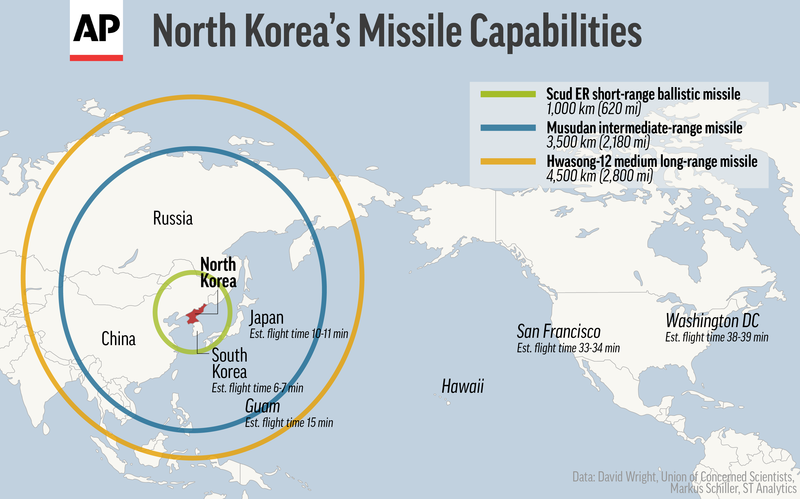Is the United States untouchable?
By APnews.com
North Korea has been testing nuclear bombs since 2006. There have been five successful nuclear bomb tests; one in 2006, 2009, 2013, and two in 2016.
October 23, 2017
North Korea has been testing nuclear bombs since 2006. BBC.com reported that North Korea conducted five successful nuclear bomb tests. The first three tests occurred a few years apart; 2006, 2009, and 2013. However, in 2016, North Korea conducted two tests a mere eight months apart; one in January and one in September.
Many people are concerned about what the effects of the nuclear testing might have on the United States. The strength and magnitude of the test have increased over the past 11 years, BBC reported. “September 2016’s test has indicated a device with and explosive yield of between and and 30 kilotonnes – which, if confirmed, would make it the North’s strongest nuclear test ever.”
The main issue is understanding what type of bomb North Korea used in the testing; an atom bomb or a hydrogen bomb. Encyclopedia Britannica defines an atomic bomb as a devastating bomb, which is created from the sudden release of energy upon the splitting, or fusion, of the nuclei of a heavy element such as plutonium or uranium.
However, the hydrogen bomb is labeled much stronger than an atomic bomb. “H-bombs use fusion – the merging of atoms – to unleash massive amounts of energy, whereas atomic bombs use nuclear fission, or the splitting of atoms,” BBC reported.
Some experts debated over how North Korea has planned to deliver the bomb. Even though there is no solid proof, it is thought that mode of delivery is a miniaturized version of the bomb on the tip of a missile.
Regardless of how North Korea has planned to bring the H-Bomb to the United States’ front door, the main question is, “How will this impact U.S. citizens?”
CNN reported that, “the blast would likely destroy or contaminate fish and marine life, leaving a serious of incalculable knock-on effects.”
The bomb would harm more than just the wildlife, CNN stated. “On the Marshall Islands, where the US also tested weapons, the local population suffered from higher rates of cancer, birth defects and thyroid disorders.”
We do not really know what could happen. This is untested waters for researchers and government officials. Yet, the after effects could be catastrophic.
“It really depends where they explode the device and what the weather patterns are like at that time,” said Melissa Hanham, a senior researcher also with the Center for Nonproliferation Studies. “That being said, we know from testing over decades that there are persistent environmental effects and impacts on humans.”
The answer is still out of our grasp, the most frightening issue is the unknown.


